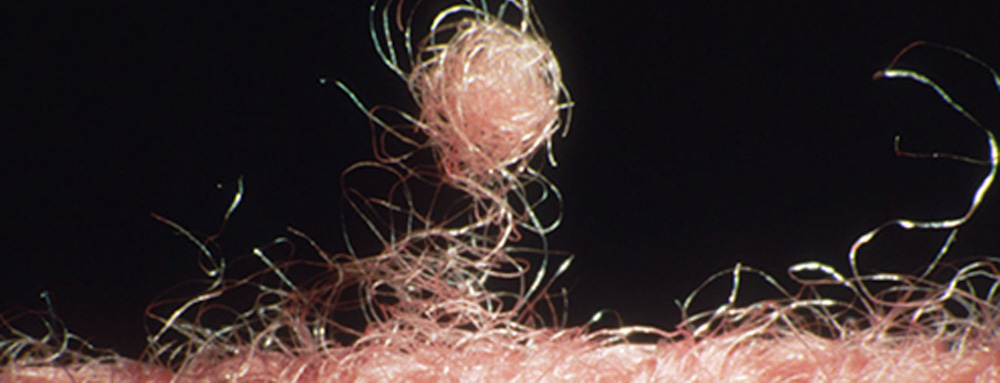
For many people who labour over their laundry, lint is a four-letter word.
It seems to crop up everywhere … in machine filters, as the small ‘pills’ on favourite jumpers or more frustratingly, the tissue hidden in the deep recesses of a pants pocket or the errant school note that did not get passed along before clothing was submerged.
While many of us find lint frustrating, some people treat it as a resource.
There are those who use it as fire starters, gardening mulch, or pet bedding. There’s the jeweller who ‘bakes’ the lint into clay-like balls to make necklaces and bracelets.
There are artists who use lint to create everything from freestanding exhibits, montages, portraits, and even rework it back into fabric to create vests and other clothing items. There’s even a play, Lint! The Musical.
Yet for most of people, it just adds another layer of work to an already little-loved task.
Lint is a by-product mainly from of the wear and tear on items comprised of very short fibres that are bundled together and can detach from the weave in the course of normal use, and in laundering.
At this time of year, it is often most evident in our woollens where small fibrous balls appear.
We often hear people lamenting that no matter the quality, colour, gauge, or expense, there does not seem to be any theory behind why one jumper will pill and another one won’t.
Well, the above elements are all contributing factors. Looser weaves tend to pill more. Cheaper (and therefore frequently shorter) fibres pill more. Finer (less strong) fibres may pill more. Fibre blends may pill more because the differences in the length of the fibres can cause them to abrade and separate. Some dye treatments may also weaken fibres more than others.
It’s like survival of the fittest as the more vulnerable fibres working their way out of the mix.
Pilling is largely caused by abrasion. When wool is wet, it is more susceptible to abrasion, yet immersion in cool water can help wool fibres swell, mingle and settle, so the technique you use to wash your woollens can actually contribute to the longevity of the garment.
Hand washing is fine, but if you have a great machine, then washing woollens inside out on a gentle cycle minimises the face of the fabric abrading against other clothes or the interior of the machine. Keep the cycle short and the load minimal.
The quality of the detergent you use is also important. Enzymes in regular laundry detergents can break down the molecules in wool. At Ainslie Laundrette we use and sell the Woolmark-certified Laundress Wool and Cashmere Shampoo.
To retain their shape, jumpers should always be air dried. And if there is still pilling, there are many options for shaving or rollering (or even using tape) to pluck or cut off those pesky little fibre balls, but it can be a low return on time investment.
Instead, bring your woollens to us, the lint guardians. We’ll take care of the logistics and make the most of your time by returning your woollens clean, smelling gorgeous, and lint-free!
